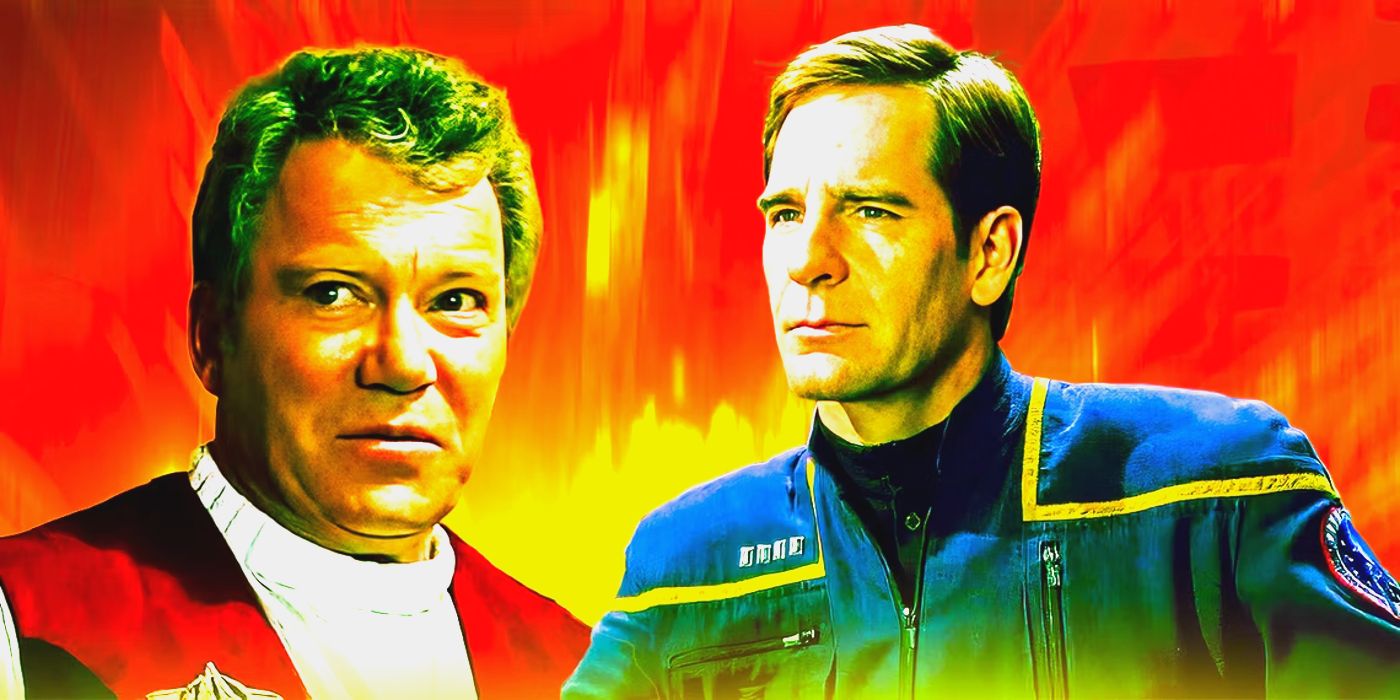Star Trek: Section 31 can finally reveal if Emperor Philippa Georgiou (Michelle Yeoh) is connected to Empress Hoshi Sato (Linda Park) from Star Trek: Enterprise. Section 31 is the first Star Trek movie made for streaming on Paramount+. Headlined by Academy Award-winner Michelle Yeoh's return as her Star Trek: Discovery anti-heroine, Emperor Philippa Georgiou, Star Trek: Section 31 promises to uncover the sins of Starfleet's black ops agency as well as reveal more about Georgiou's history as the Mirror Universe's Emperor.

The mysterious Star Trek: Section 31 appears to be set in Star Trek's 24th century 'lost era,' but Philippa Georgiou's glory years as the Emperor of the Terran Empire in the Mirror Universe happened in the 23rd century. As seen in Star Trek: Discovery season 1, and revisited in season 3, Georgiou was the ruthless, absolute ruler of the Terran Empire until she joined Michael Burnham (Sonequa Martin-Green) and the USS Discovery in Star Trek's Prime Universe. Georgiou's exit from the Mirror Universe left behind unanswered questions, and a pertinent one is whether Georgiou is tied to the 22nd-century reign of Empress Hoshi Sato.
Are the two Mirror Universe Emperors linked?
Star Trek: Section 31 contains flashbacks to the young Philippa Georgiou (Miku Martineau) and will show some of the blood that was spilled to make her the Terran Emperor in the 23rd century. This is an ideal opportunity for Star Trek: Section 31 to resolve whether Georgiou's family or legacy is descended in any way from Empress Hoshi Sato. Hoshi is believed to be the first woman to rule the Terran Empire, which she achieved through treachery and murder at the end of Star Trek: Enterprise season 4's two-parter, "In a Mirror Darkly."
Emperor Georgiou's formal title was Her Most Imperial Majesty, Mother of the Fatherland, Overlord of Vulcan, Dominus of Qo'noS, Regina Andor, Philippa Georgiou Augustus Iaponius Centarius.
Another bond Empress Hoshi Sato and Emperor Philippa Georgiou share is the USS Defiant. The 23rd-century Constitution Class starship crossed over from Star Trek's Prime Universe into the 22nd-century Mirror Universe. Commander Jonathan Archer (Scott Bakula) of the ISS Enterprise stole the Defiant, plotting to use its advanced technology to take over the Terran Empire. But Hoshi murdered Archer and executed his plan, declaring herself Empress. In Star Trek: Discovery season 1, Emperor Georgiou knew about the United Federation of Planets from the USS Defiant's computer archives.
Jordon Nardino, who wrote Star Trek: Discovery season 1's "Vaulting Ambition," Tweeted a thread in 2018 about the connection between Emperor Georgiou and Empress Sato, but his background info may not be canonical:
Star Trek: Enterprise Season 5 Would Have Returned To The Mirror Universe
Discovery picked up where Enterprise left off

Star Trek: Enterprise season 5, if it happened, would likely have featured a return to the Mirror Universe, which was a favorite of Enterprise's late showrunner, Manny Coto. Enterprise's original idea for a Mirror Universe event involved William Shatner, who would have reprised the Mirror Universe's Tiberius Kirk from Star Trek: The Original Series' "Mirror Mirror." Tiberius Kirk clashing with Captain Jonathan Archer didn't happen, but Coto decided to take Star Trek: Enterprise into the Mirror Universe anyway with the well-received "In a Mirror Darkly," which ended with the surprise of Hoshi Sato's takeover of the Terran Empire.
A financial and budgetary dispute between William Shatner's camp and Paramount/UPN, which was planning to cancel Star Trek: Enterprise , is believed to be why the Tiberius Kirk Mirror Universe episodes didn't happen.
Star Trek: Discovery's creation of Emperor Georgiou may have been inspired by Empress Hoshi Sato in some way, but it's more likely the fact that both actresses are Asian is a coincidence after Michelle Yeoh was cast in the roles of Captain Georgiou and Emperor Georgiou. Still, the only two known Mirror Universe Emperors being of Asian descent and separated by less than a hundred years in Star Trek's timeline would benefit from a long-awaited canonical explanation in Star Trek: Section 31.



